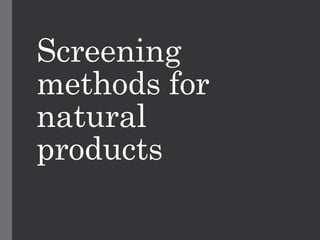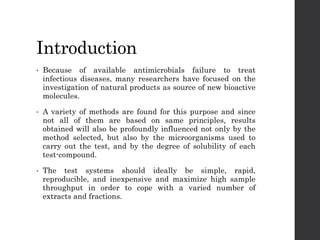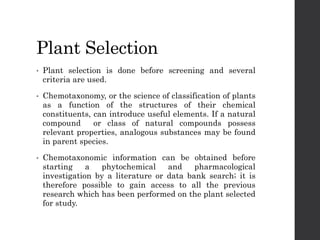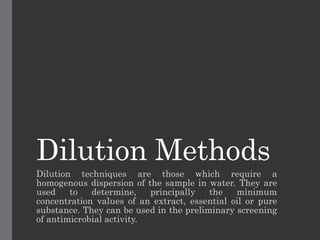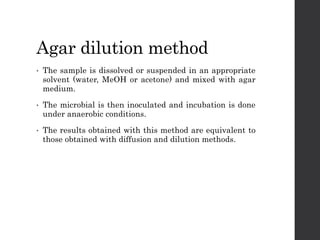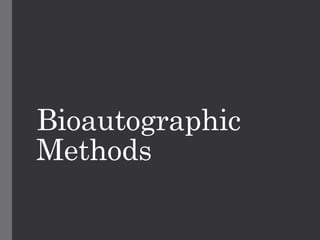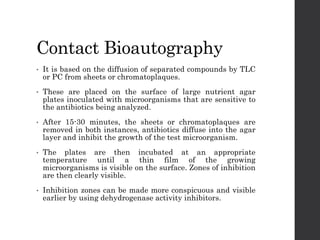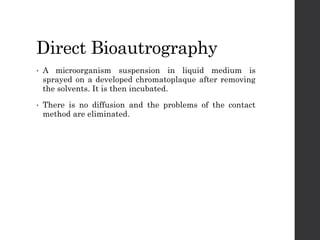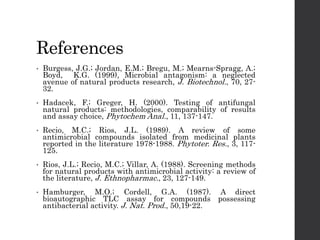This document discusses various screening methods for evaluating the antimicrobial activity of natural products. It describes diffusion methods like the agar well diffusion method and disc diffusion method. Dilution methods, like the tube assay and agar dilution method, are also covered. Bioautographic methods like contact bioautography, direct bioautography, and immersion bioautography are explained. Plant selection criteria for screening include chemotaxonomy, traditional medicine information, field observations, and random collection. LC-hyphenated techniques are also mentioned as screening methods. The document concludes by stating that diffusion methods are commonly used despite some difficulties and that screening aims to efficiently test large numbers of materials.
